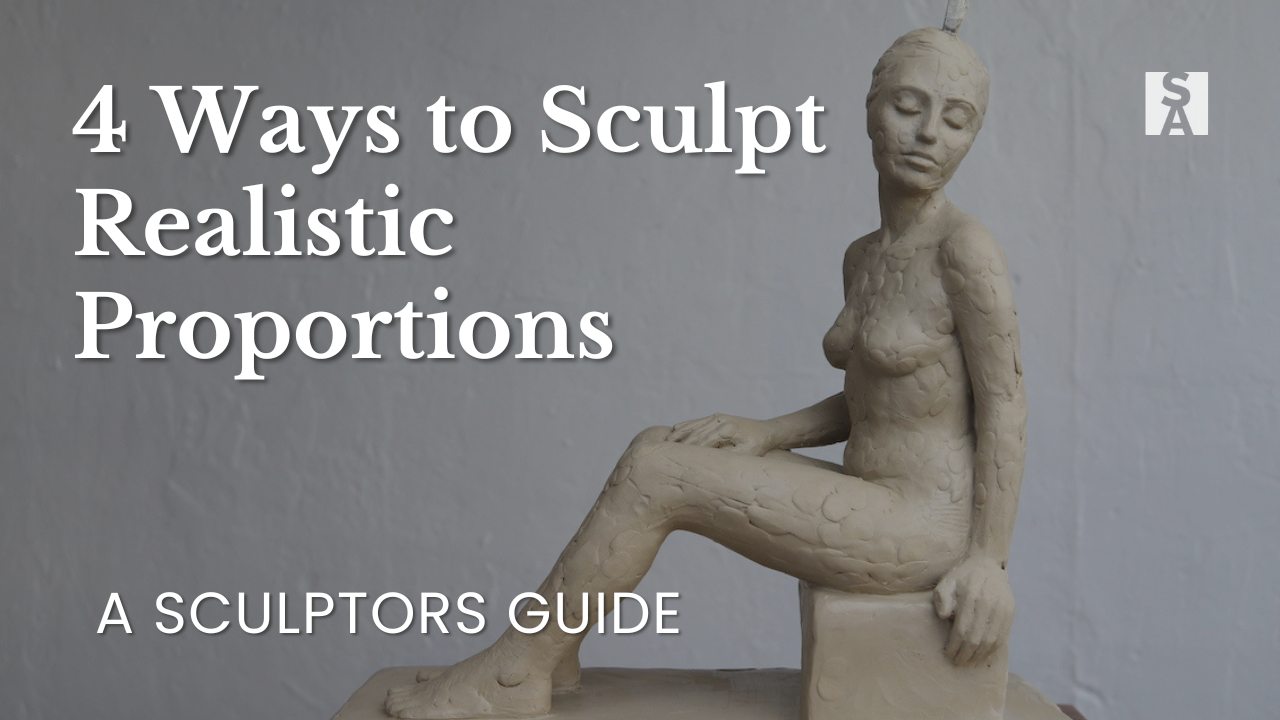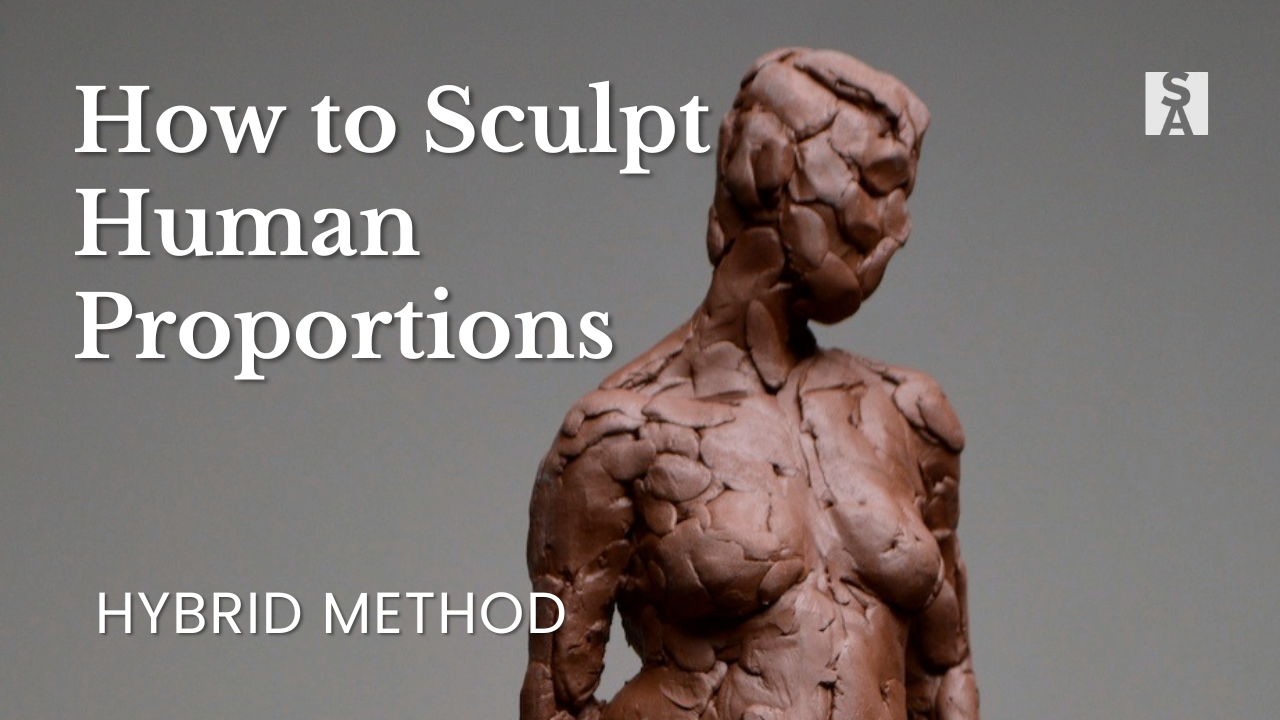How to Sculpt a Mouth in Clay: A Classical Study

Table of Contents
- Why Sculpting the Mouth Matters
- Studying Michelangelo’s David
- Step-by-Step: Sculpting the Mouth in 4 Stages
- Pro Tip: Why Sculpting from a Cast Is So Effective
- What You’ll Learn from This Study
- Try This Study Inside the Atelier
If you’ve ever sculpted a portrait and struggled to sculpt the mouth in clay—you’re not alone.
Subtle, soft, and expressive: it’s one of the most difficult features to sculpt well. Yet mastering the mouth can completely transform your portraits.
In this post, you’ll discover why the mouth of Michelangelo’s David is one of the most effective classical references for sculptors - and how studying it can deepen your understanding of structure, form, and expression.
Why Sculpt a Mouth Study?
The mouth is more than just a pair of lips: it’s a sculptural zone of tension, softness, and asymmetry. Unlike the nose or eyes, it isn’t anchored by strong bone structure. Instead, it’s made of delicate tissue stretched over complex underlying forms. That’s what makes it so expressive, and so challenging.
When you sculpt the mouth as a focused study, you begin to understand how plane changes define volume, how subtle shifts create emotion, and how to integrate the lips into the structure of the face, not just place them on top of it.
For many students, this study becomes a turning point in how they see form:
“Amazing to learn the many, many planes of the mouth/lips - SO much going on. ”
— Kathy, Atelier Student
A mouth study trains your eye, your hand, and your ability to see like a sculptor. And once that shift happens, it shows up in every portrait you make.
Why Michelangelo’s David Is the Ideal Reference

The mouth of the David is anything but passive. It holds tension - compressed lips, a slight asymmetry - that reveals the emotional undercurrent of the entire sculpture.
Studying this form helps you understand how a sculptor interprets the anatomy, not just how it looks in life. It’s about form, rhythm, and intention.
Working from a cast of this masterpiece is a way to learn not just what the mouth looks like - but how to sculpt it.
Step-by-Step: Sculpting the Mouth in 4 Stages
Here’s how I guide students through this study inside the Atelier, by breaking the process into manageable phases.
4 key stages of sculpting a mouth in clay:

- Block in the Masses – Begin with the muzzle: the curved volume around the mouth. Establish the forward projection and general proportion.
- Build the major planes – Lightly sketch in the outlines of the lips and philtrum. Look for the large planes that create the structure, look beyond the lips themselves.
- Shape the form – Build out the forms to their full volume and create softer planes changes to reflect the fleshy surface of the lips.
- Refine Edges and Transitions – Refine the mouth to create a soft, naturalistic form using your tools.
Pro Tip: Why Sculpting from a Cast Is So Effective
Before working from life, classical artists traditionally trained by copying plaster casts. These casts offered something priceless: the ability to study great sculpture up close, in three dimensions, and without the pressure of a live model.

When you sculpt the mouth from a cast, you’re not just copying, you’re learning how a master sculptor interpreted anatomical form into expressive structure. Because the cast is stationary and often larger than life, it gives you time to observe subtle transitions, examine the form from all angles and truly understand the underlying planes of the lips and muzzle.
This kind of study trains your eye to see sculpturally. It builds a foundation of knowledge that prepares you to approach the complexity of a real-life mouth with greater confidence.
What You’ll Learn from Sculpting the Mouth

- Clay Techniques – You’ll practice smoothing transitions, establishing planes, and creating natural forms in clay.
- How to See Structure – You’ll learn to see and sculpt the planes of the mouth underneath the soft fleshy forms so that your portraits feel more real.
- Confidence with Facial Features – You’ll gain skill that applies across the entire portrait, not just the lips.
- Classical Insight – You’ll absorb the sculptural intelligence of Michelangelo by building it with your own hands.
Students often begin to see how subtle anatomical forms interact, not just as isolated features, but as a continuous, sculptural whole:
“This helped me notice how different planes of anatomical shapes come together or are in relationship to one another… like the lips’ plane in relation to the philtrum and muscles next to it, and the muscles underneath.”
— Andrea, Atelier Student
Want to Try This Study Inside the Atelier?
Inside the Atelier program, you’ll sculpt the mouth from a high-quality cast of David, with video guidance to help you truly understand the structure, not just copy the surface.
→ Discover the Atelier Program
ARE YOU ON THE LIST?
Online Atelier Program for Sculpture:
Master the foundations of traditional clay figure sculpting.
Next Enrolment January 2026.
Enter Your Details Below to Get Notified:
You can unsubscribe at any time.





